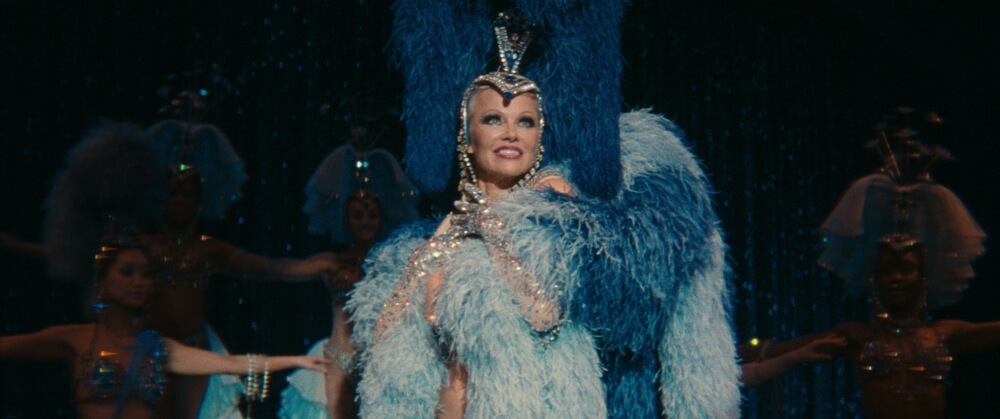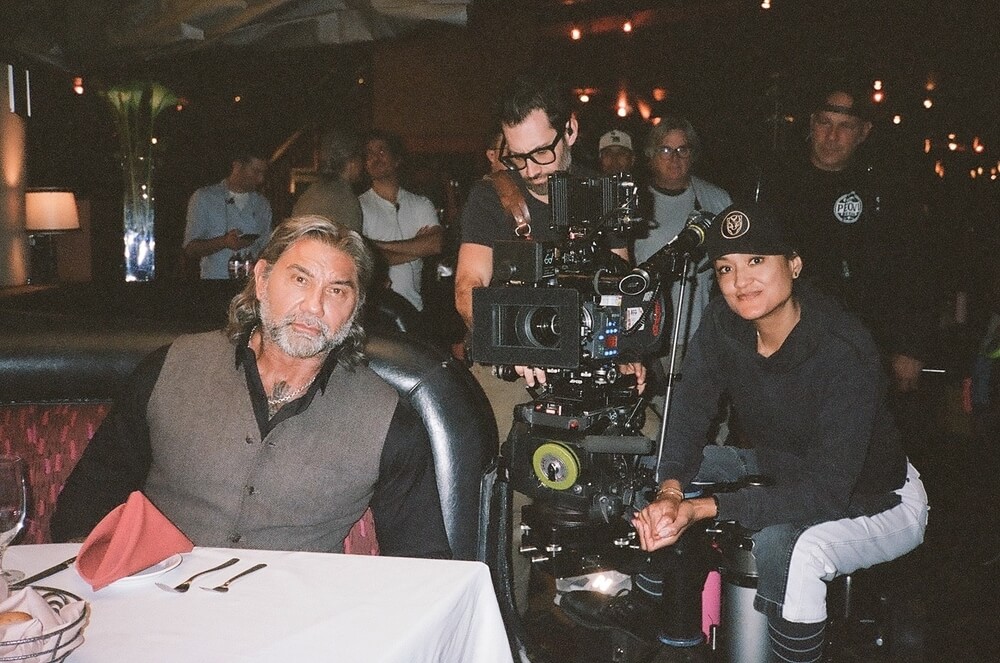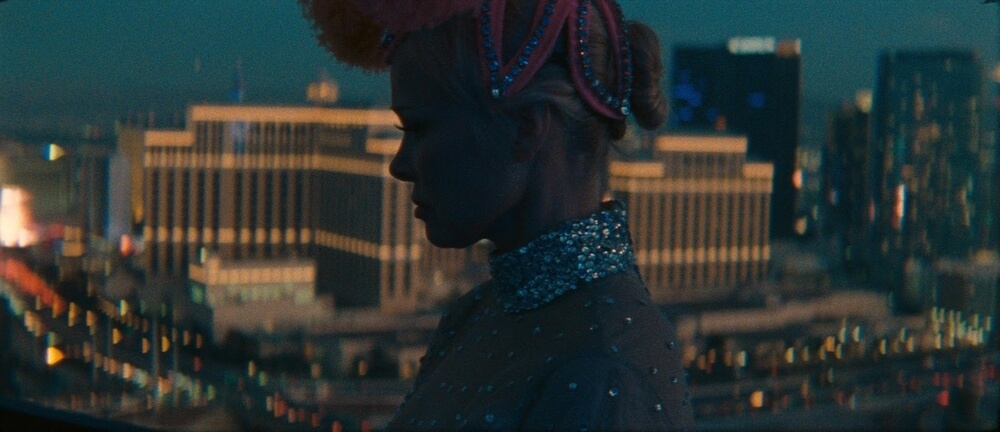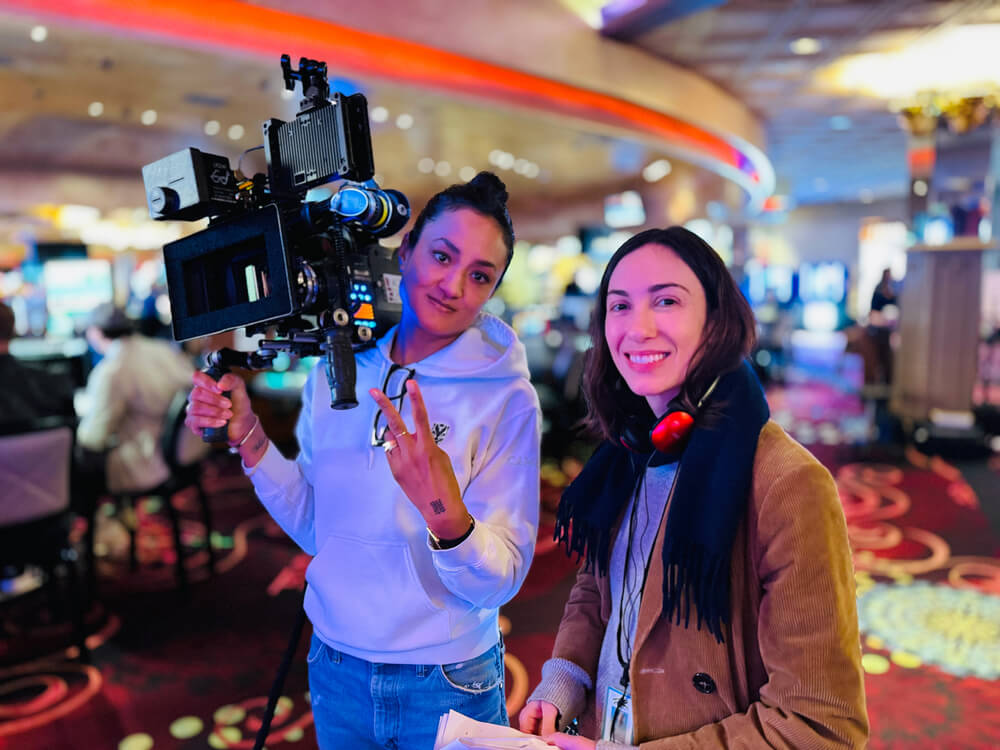Autumn Durald Arkapaw ASC on filming The Last Showgirl

In director Gia Coppola’s feature film The Last Showgirl, Pamela Anderson stars as Shelly, a veteran Las Vegas dancer suddenly facing an unknown future when her long-running show comes to an abrupt end. The production reunited Coppola with her longtime collaborator Autumn Durald Arkapaw, ASC following their previous collaborations on projects that include the features Palo Alto and Mainstream. For their intimate portrait of Anderson’s character in The Last Showgirl, Coppola and Durald Arkapaw embraced the super 16mm film format, working with Panavision Woodland Hills for their lens and camera package. The cinematographer recently shared her reflections on the production for the following Q&A.

Panavision: When did you and Gia begin talking about The Last Showgirl, and how did Gia describe the movie to you?
Autumn Durald Arkapaw, ASC: Gia sent me the script a little less than a year before we started shooting, about February 2023. She mentioned she was working with her cousin [Kate Gersten] who had a screenplay that was originally written for the stage. It was a film about an aging showgirl in Las Vegas and her relationship with her daughter whom she wasn’t around to raise.
How would you describe the look and visual language you and Gia wanted to create?
Durald Arkapaw: Gia always shares a photo album with me that includes her most inspirational images for the vision of the film. Sometimes there are exact frames she wants to recreate. She and I appreciate a softer, dreamier palette, so on that note we’re always aligned. Our strongest visual choice was to shoot on 16mm film. It was important for us to have that nostalgia, saturation and density in the image. We wanted to have all the magic that comes with shooting film — the unknown, the bravery, the excitement, the ethereal quality.
It was also important for us to shoot a small film where we had all the control. No monitors, no video village, no distractions. We felt like this was the perfect project to shoot 16mm, and that texture would be a highlight in the film. At one point in prep, the producer didn’t want to shoot film and thought it would be too risky. I refused to shoot digital for this one and felt like it was important to protect the original vision. The one thing with film is you cannot have fear. There is no room for it. That is the beauty of film: You have to be brave and trust. And in that trust, it will give you the beauty and emotion that you’re after.

Were there any particular visual references you looked at for inspiration?
Durald Arkapaw: Not many films are shot in anamorphic on super 16mm. I didn’t have a specific film as my visual reference. I knew I wanted a certain close focus and falloff considering we wanted to always be with the women, camera handheld, tracking all their emotional cues. There is nothing like a Panavision anamorphic flare, and that to me is always a character in the films I shoot.
Las Vegas can feel like a fishbowl when you visit and live there, so I wanted a lens that allowed these women to look beautiful and us to be very focused on them. I appreciate a lot of falloff, and I tend to use lenses with more character. The characteristics of these anamorphic lenses helped push that fishbowl idea forward. I did some early tests with my AC Ethan McDonald and [Panavision senior vice president of optical engineering and lens strategy] Dan Sasaki and showed Gia. She thought they were beautiful.

Once you and Gia decided on super 16mm, how did you go about selecting the lenses you would use?
Durald Arkapaw: The most important choice I make as a DP is the director collaboration, the second most important choice is the script, and the third is the lens. The lens is the eye of the story; it’s how the audience will view everything. I don’t take that lightly. I mostly shoot anamorphic, and the options for anamorphic 16mm are slim or nonexistent. [Panavision marketing executive] Mike Carter, Dan Sasaki, Ethan and I had a conversation about our shooting style on this film and what we would need out of the lenses. Those requirements led to Dan revising and making some bespoke anamorphics for super 16mm.
Dan and I talk about lenses a lot. Some of those conversations can be pretty comical. I enjoy our collaboration so much. I cannot say enough how much of an artist he is. More importantly, he understands how I shoot and what I’m after. Lighting is very important and always a character in my films. The way in which I light is very dependent on the lens characteristics. They work hand in hand. Dan knows about my love for the perfect field curvature. He understands that what we ultimately create will also accompany very particular lighting to allow for those lens characteristics to work and shine.
My AC and I love to test and work out the kinks with our lenses beforehand. At times our lenses can be tricky since I love to shoot wide open and with a lot of personality in the glass. This type of shooting takes a great focus puller with intuition and grace.

Is there a shot or a scene in the film that was particularly satisfying creatively?
Durald Arkapaw: My favorite scene in the film is a voicemail Shelly is leaving for her daughter. Gia asked Pamela to do a writing assignment about motherhood. Pamela wrote something very beautiful, and Gia wanted to shoot her saying it into the phone. In case she revised the VO, we decided to shoot it from behind. It’s a very strong, beautiful frame, and what she is saying is so elegant and emotional. Gia ended up intercutting it with some other footage, but I always loved that shot because it was off script and in the moment.
Who were some of your key crew members on this film?
Durald Arkapaw: We were lucky to have my crew on this one since it was a very small budget, challenged and intimate. We couldn’t have done it in 18 days without my gaffer Brian Bartolini, key grip Miguel Benavides, AC Ethan McDonald and their teams. I also brought on AD Jason Lombardo, whom I work with on commercials, and he was amazing at guiding this film and being integral to its success.
You’ve been working with Gia for more than a decade at this point. How was The Last Showgirl unique among your collaborations?
Durald Arkapaw: My collaboration with Gia will always feel like you’re hanging out with your best friend making a movie. And this time around will always be unique because we’re both older now, and both mothers. I’m proud of us on this one because we set out to make a certain type of film and the results are exactly that, personal to us and made by us. That doesn’t happen often.
